AMD sets the boost clock for this card very high, as does the TBP. This does not follow the old tradition of the rather efficient workstation offshoots, but it does use the crowbar a little to score in the performance. The selected benchmarks will show us how well this will work out. Since the current drivers of the manufacturers have again been optimized very specifically for SPECViewperf12 and 13, I leave this suite completely out.
I'm not a hand puppet of PR, so I try to run real application benchmarks instead of synthetic applications. All maps are measured in up to five iterations per benchmark and only those results are evaluated where the temperatures remained stable after reaching the upper limit. Testing cold cards was and is eye-washing, because the beat is not the same. For the output, the EIZO monitor from the system description (page 1) is used and I also use 10-bit color depth, as far as possible.
Benchmark results in Ultra HD (3840 x 2160 pixels)
Autodesk's AutoCAD is now almost a standard DirectX application, both in 2D in design and shading in 3D views. If you look at both sub-areas, the maps in the 2D score are so close together that you can almost speak of the same performance.
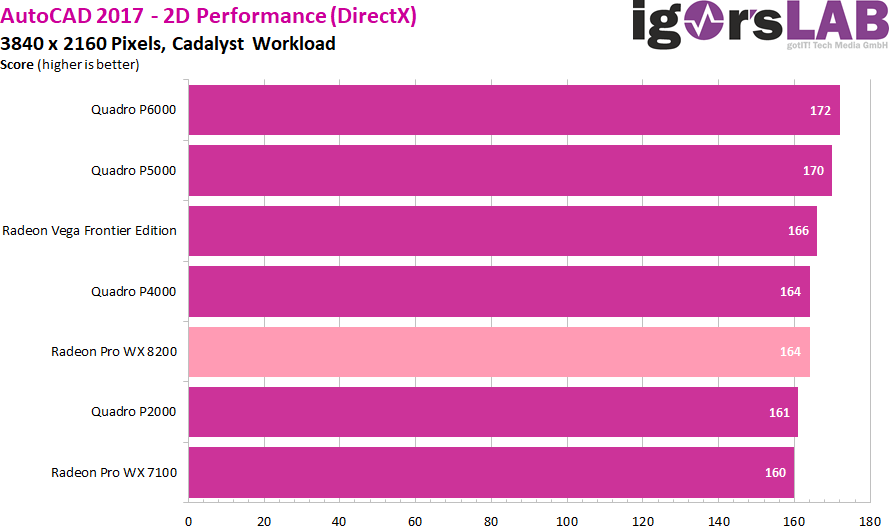
In the 3D result, Nvidia dominates again and everything is grouped as you would expect with a not exactly dead-optimized computer game and DirectX11. But here, too, the differences in the beams can be measured and represented, but are not noticeable in daily use. The image quality is about the same for all cards.
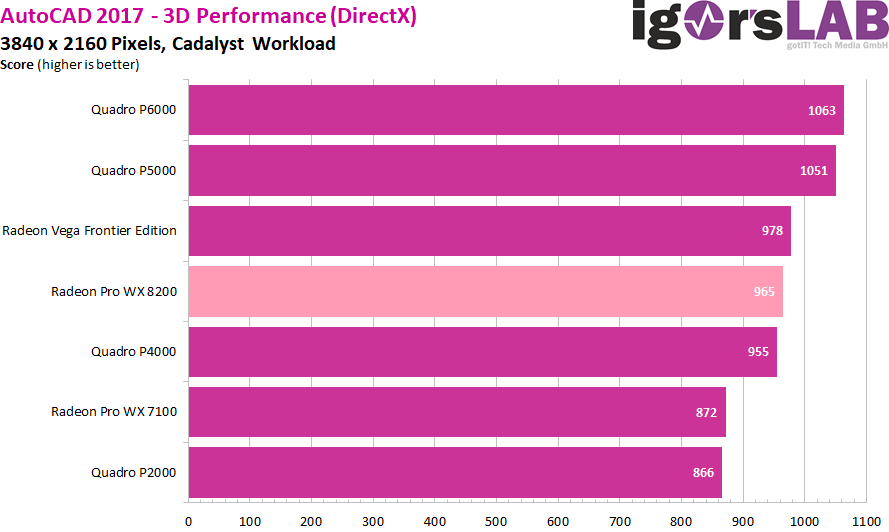
Cinebench OpenGL is just as sucked out as SPECviewperf, but the drivers also play a very important role here. The CPU has nice multi-threaded so much to contribute and you can also see very clearly that Nvidia has put a lot of effort into optimizing here. I have consciously taken this benchmark with me, especially to show what happens in the end when an application is not at the forefront of the driver developers.
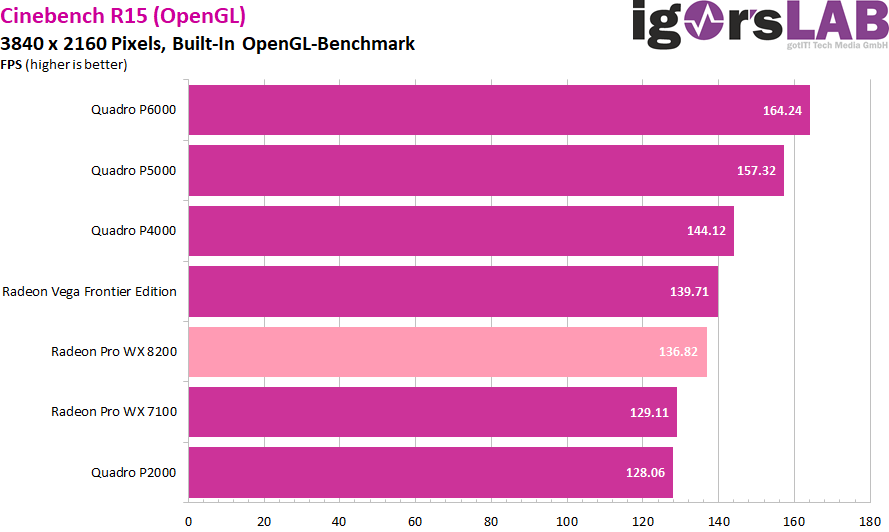
You don't have to run synthetics like Luxmark when it comes to rendering and crunching. The Graphics Composite by Creo also includes rendering scenes, but not separately as a separate single application, but beautiful in the practical mix of many. And behold, the performance is exactly where you want it to be. Even if the Quadro P6000 certainly sells slightly below value here due to driver.
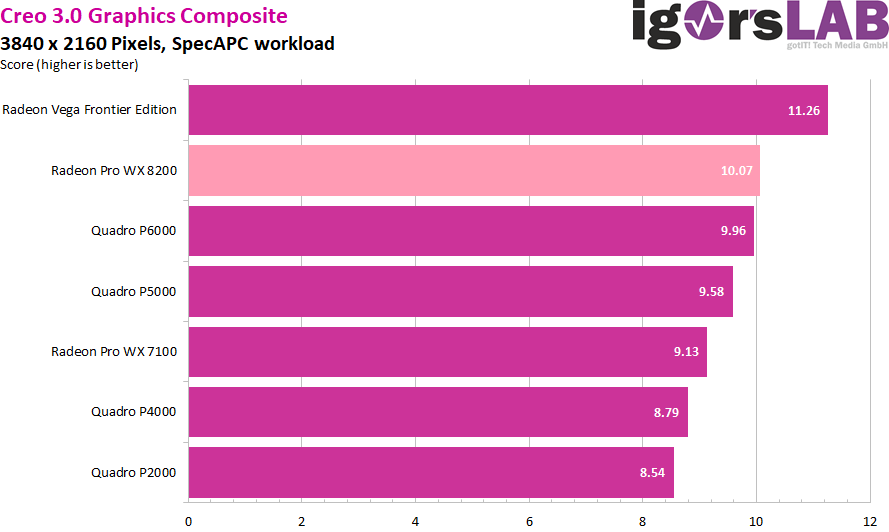
In Solidworks, too, the map is exactly where you can expect it based on the data and experience with Vega. However, the Quadro P4000 sits hard in the neck, which is even cheaper and more efficient. However, in this form, this is rather an isolated case.
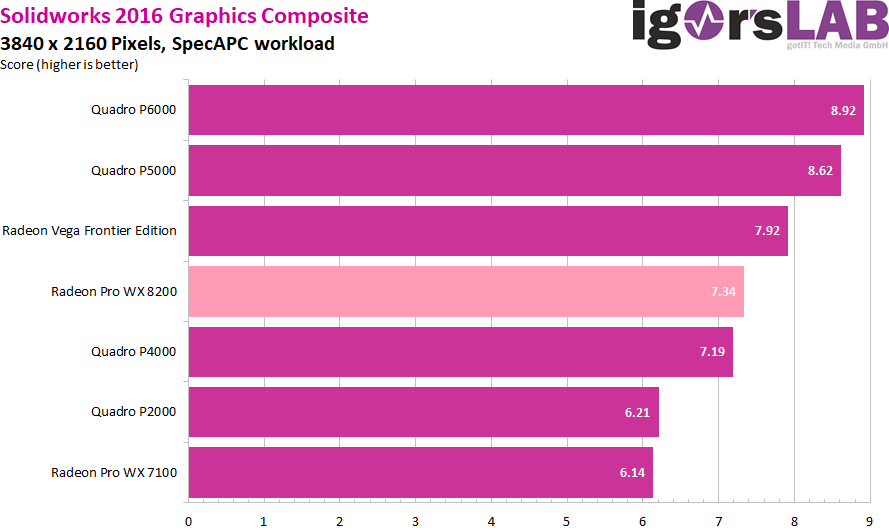
In the 3ds Max, Vega dominates as long as it is about the pure GPU composite. AMD has optimized a lot here, especially since the Ryzen 2 performs above average in the 3ds Max. So if you see your field of work in this direction, you are welcome to access it. It's hardly cheaper.
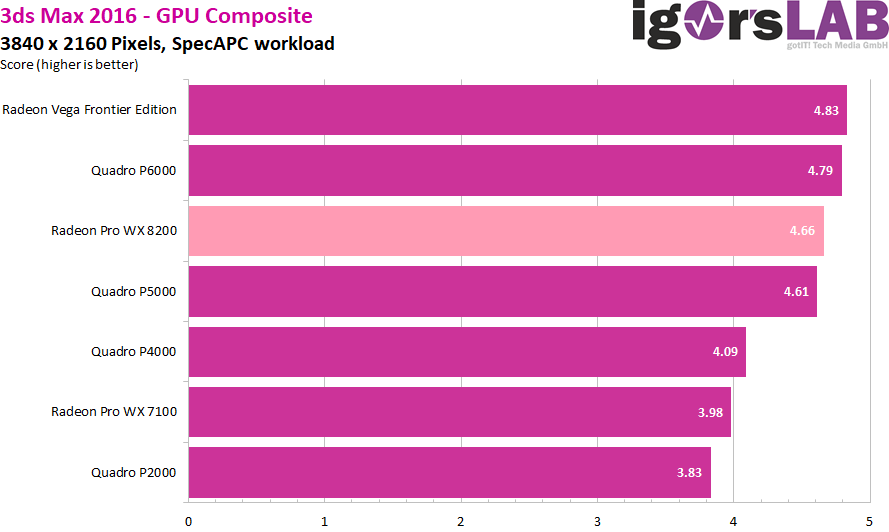
When rendering, the Quadros can bend the hierarchy a bit, but they can't really declassify the Vegas here either.
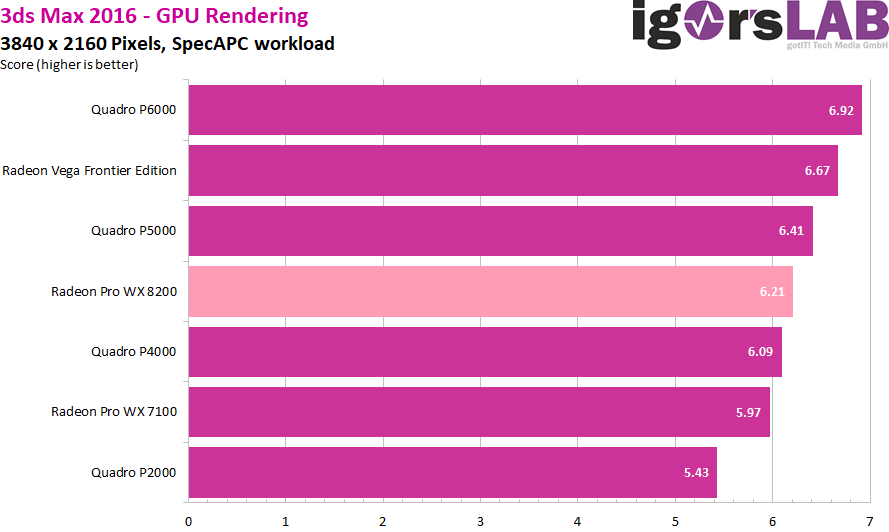
Intermediate conclusion
The selection of benchmarks does not have to be long to show that it is still important to optimize the drivers for a particular application. That is why I have really confined myself to the essentials, so that we can see the differences even better. Anyone who thinks that they can still find significant differences in multimedia applications such as Adobe's CC (videocoding) or DAVINCI Resolve is mistaken. That's why I only did plausibility tests in this regard, but then canceled them because the measurement inaccuracies were sometimes higher than the real performance differences.
So the Radeon Pro WX 8200 offers a lot for the money, even if Vega56 isn't quite fresh. The interpretation of preferring to score in the direction of performance and to neglect the efficiency a little is quite a good thing. And when it gets too warm, AMD still has the mysterious graphite thermal paste in petto, which performs quite well.


































Kommentieren